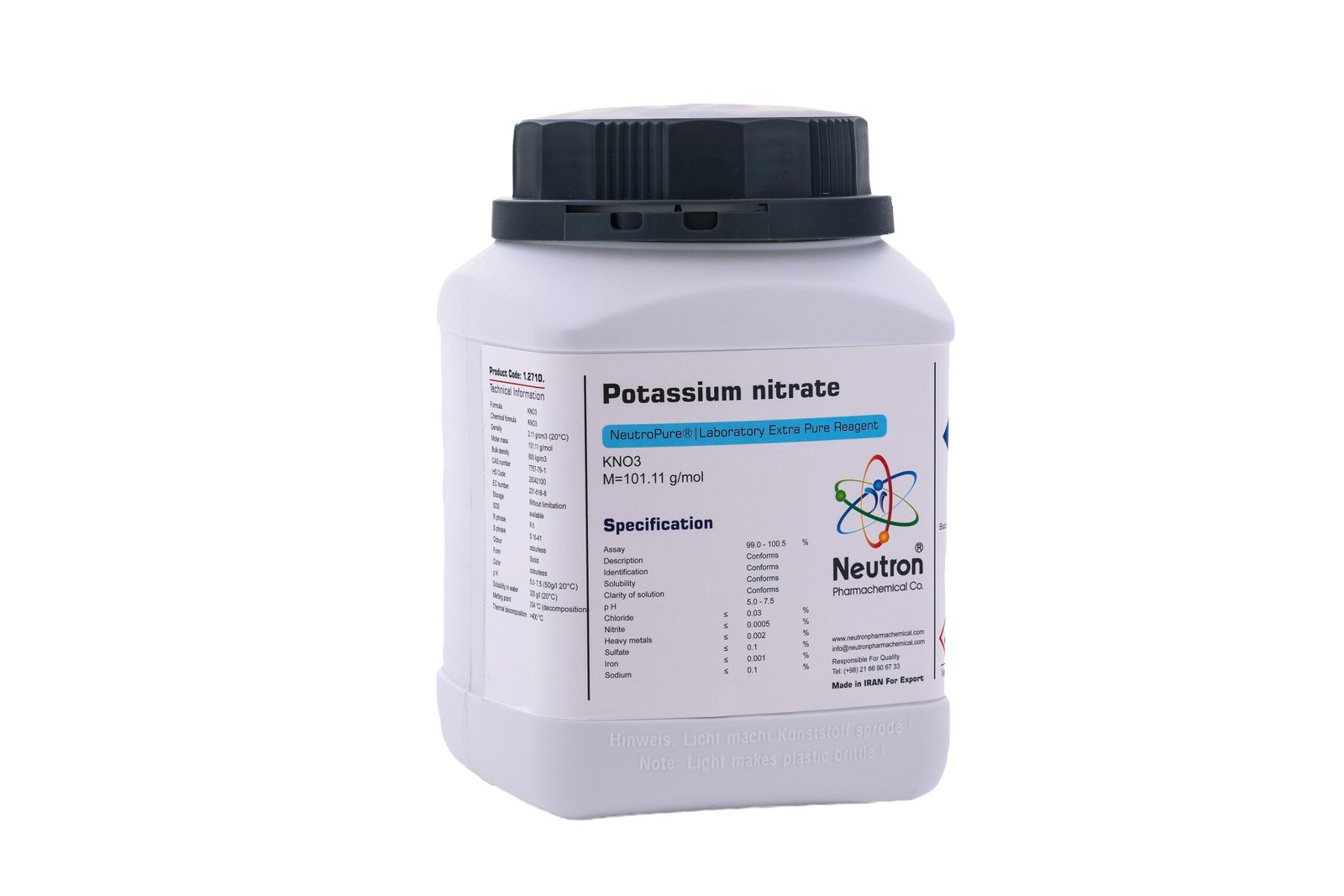Potassium nitrate
| Formula | KNO3 |
| Chemical formula | KNO3 |
| Density | 2.11 g/cm3 (20°C) |
| Molar mass | 101.11 g/mol |
| Bulk density | 800 kg/m3 |
| CAS number | 7757-79-1 |
| HS Code | 28342100 |
| EC number | 231-818-8 |
| Storage | Without limitation |
| SDS | available |
| R phrase | R 8 |
| S phrase | S 16-41 |
| Odour | odourless |
| Form | Ssolid |
| Color | colourless |
| p H | 5.0- 7.5 (50g/l 20°C) |
| Solubility in water | 320 g/l (20°C) |
| Melting point | 334 °C (decomposition) |
| Thermal decomposition | >400 °C |
| Assay | 99.0 – 100.5 | % | |
| Description | Conforms | ||
| Identification | Conforms | ||
| Solubility | Conforms | ||
| Clarity of solution | Conforms | ||
| p H | 5.0 – 7.5 | ||
| Chloride | ≤ | 0.03 | % |
| Nitrite | ≤ | 0.0005 | % |
| Heavy metals | ≤ | 0.002 | % |
| Sulfate | ≤ | 0.1 | % |
| Iron | ≤ | 0.001 | % |
| Sodium | ≤ | 0.1 | % |
Potassium nitrate is a white, crystalline solid with no odor and a salty, slightly bitter taste. It is highly soluble in water and is commonly used in fertilizers, food preservation, and pyrotechnics.
🏭⚗️ Production
Potassium nitrate is primarily produced by the reaction of potassium chloride with sodium nitrate or through natural mineral extraction. Industrial synthesis may also involve the reaction of potassium hydroxide with nitric acid.
🔬 Properties
Potassium nitrate has the chemical formula KNO₃ and a molar mass of approximately 101.10 g/mol. It appears as white crystals or powder, with a melting point of about 334 °C and decomposes upon further heating. It is highly soluble in water (about 31.6 g per 100 mL at 20°C) but insoluble in alcohols.
🧪 Applications
Potassium nitrate is widely used as a key component in fertilizers to provide nitrogen and potassium nutrients to plants. It also serves as an oxidizing agent in gunpowder and fireworks, and as a food preservative, particularly in curing meats. Additionally, it finds applications in pharmaceuticals and metal treatment processes.
⚠️ Safety
Potassium nitrate is generally considered safe when handled properly but is a strong oxidizer and can accelerate combustion. It should be stored away from combustible materials and reducing agents. Inhalation of dust or ingestion in large amounts may cause irritation or health issues. Proper protective equipment and good ventilation are important during handling and storage.





